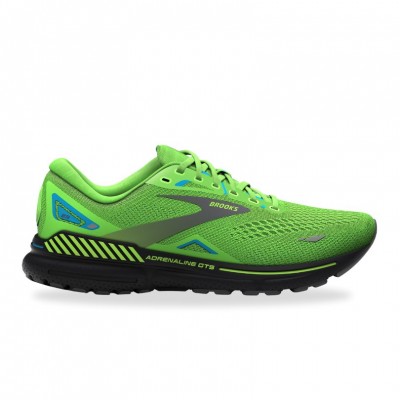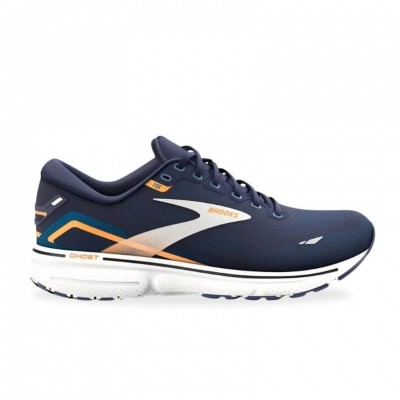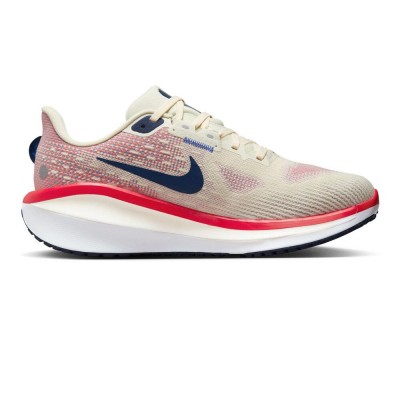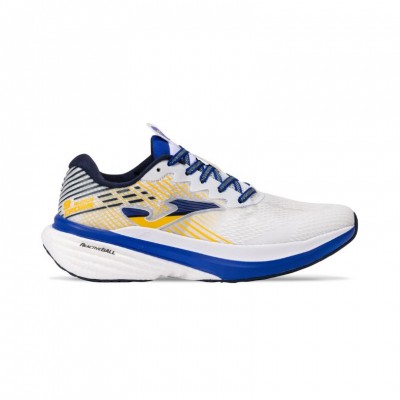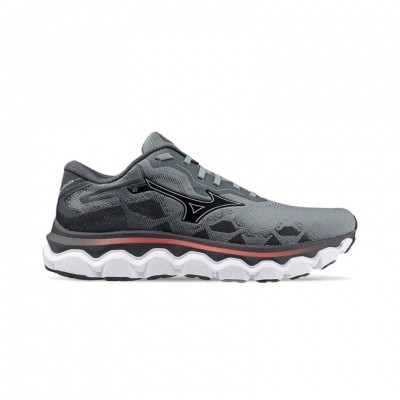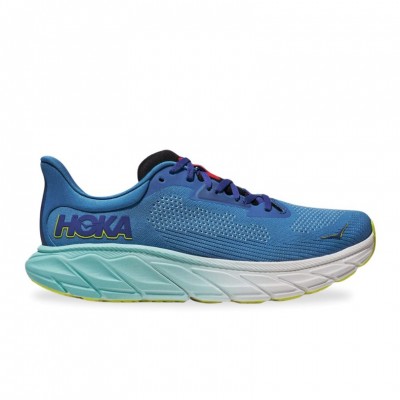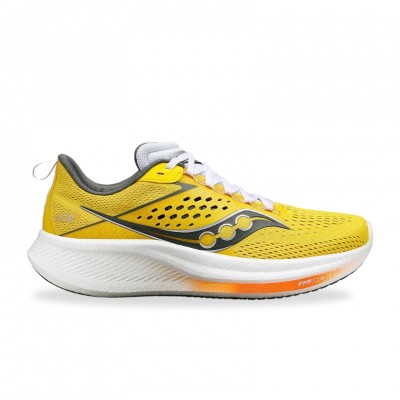When we at the RUNNEA editorial office asked our trusted sports podiatrist and running shoes enthusiast, Toni Fernández Sierra, about this topic, we didn't get a negative answer. However, it is true that he almost asked us for a break, since talking about the best running shoes to avoid plantar fasciitis is a topic of interest, but also one that needs to be treated delicately. Therefore, this RUNNEA Magazine article deserves a careful reading, as well as we offer a list of recommendations in running shoes that you should not overlook.
Not sure which shoe to choose?
In a few simple steps we help you to choose the ideal running shoe for you.
GO TO THE RECOMMENDERYes, it is true that it is one of the most frequent sports injuries in popular runners, but when a runner comes to my office and asks me a question like this, my first reaction is to swallow saliva; and not because I don't know what to answer, but because of the complexity of the answer. So I'm going to tell you the same thing I would tell you if you were at PODUM, my clinic in Cordoba.

Demystifying the plantar fasciitis injury
First of all, I would like to demystify the dreaded PLANTAR FASCITIS. It has a reputation for being an insidious and untreatable injury, but in most cases, this is because we confuse plantar fasciitis with many other conditions that occur in that area. If you have a long time with pain in the sole of the foot, you are diagnosed with fasciitis and the injury is not solved, you should consider the option that your problem is another, and you need another type of treatment.
We can also find ourselves with fasciitis, which I call; secondary. This means that the fascia really bothers us, but the original injury is in another place (in a secondary way we force the fascia to work in excess by incorrect supports or some other decompensation and the fascia collapses).

What is plantar fasciitis and why does it occur?
Plantar fasciitis is an inflammation due to overuse or trauma of a rather fibrous tissue that runs from the back of the foot (neo) to the toe area, fanning out.
In summary we can say that its main function is to give elasticity to the plantar arch so that it "deforms" and adapts to the ground when we impact against the ground and help in the flight phase (without load) to recover the arches. It is like a rubber.
Personally I have a phrase that I repeat a lot: a bad diagnosis begins with a bad treatment and ends with a chronic injury. The worst scenario for an athlete
Direct relationship between running shoes and plantar fasciitis.
Why do we at RUNNEA explain this to you? Because now it will be much easier to understand what features we should look for in a running shoe to help us avoid plantar fasciitis.
If we have said that plantar fasciitis usually appears when the arches of our foot are flattened in excess when in contact with the ground either by excessive pronation, by a flat foot, by being overweight, by muscle fatigue after running many kms.... and we exceed the elastic capacity of the fascia, we should look for shoes that offer us greater support and help us to limit this excess of movement. But watch out....Support, YES; Splinting, NO.
We should pay attention to several things:
- Existence of lateral support elements in the heel and midfoot area.
Such as pieces in the heel counter, type of lacing, lateral support of the tongue, type of upper material, existence or not of a chassis on the sides between the midsole and the upper... or any other element that gives us a feeling of support when we put our foot in.
- Degree of torsional control of the shoe in the midfoot.
If a shoe is held at the heel and toe area and we are able to twist it or bend it in half, it means that when we run it will not have any support capacity.
- Cushioning of the shoe must be adequate according to our weight
The sensation that the shoe must transmit is that it cushions, but at the same time it must transmit stability. When running it must absorb the impacts, but an excess of cushioning will make the shoe deform in excess and our plantar arch will deform more, increasing the work that our musculature must make to stop this instability, being able to provoke the injury.
Not sure which running shoe to choose?
In a few simple steps we help you to choose the ideal running shoe for you
Go to the Shoe Finder- Always look for shoes with wide bases
To find out is as easy as turning the shoe upside down and look at the sole; the wider the better. Thanks to the wide bases we gain in stability during the race. Personally I do not like very much for this pathology, the designs where just below the internal arch, eliminate material leaving that area without support. As the kilometers go by we will pronate, the midsole materials will collapse and if we do not have support in that area, the upper will give way, the foot will pronate due to lack of support and the fascia will tighten excessively. In the same way if we are big pronators.
- Shoes with marked profiles that favor the transition in the support.
Either from the heel, midfoot or forefoot, depending on our running technique. These designs, let's say boat type, make that the support times are low (less time with the foot on the ground, less risk of injury).

- Higher or lower drop, which is better?
There is a lot of controversy about the drop that improves fasciitis pain. Personally I usually recommend medium/higher drops, if the shoe is a training shoe; if we do not have a good running technique; if it is for long runs; if we have a few extra kilos...and ALWAYS if the shoe complies with the above (stability, firm cushioning, support...).
Runners with good technique, medium/low weight, good support...can use medium/lower drops.
Why I think this way is easy to explain, although I know that not everyone will agree. A high drop causes a slide effect, which will decrease support times as long as the midsole materials are not too soft. Even so, I don't pay too much attention to the drop of the shoes, as I pay more attention to the profiles, the rockers, the densities of the materials....
We can also try to recover the injury in a totally opposite way; using minimalistshoes like Five Fingers, Merrell... and looking for a greater power of our plantar musculature, something that we also do with our runners, but in asymptomatic phases and in runners with good technique.
We could talk at length about this type of minimalistshoes, but the subject is postponed for future posts in RUNNEA.

The best running shoes to avoid plantar fasciitis
Before starting with the list of shoes, add that a correct choice of shoe may not help us to recover the fascia (the causes of injury are multifactorial and sometimes you have to perform an analysis of the footprint in a specialized center), but a poor choice of footwear is sure to increase the tension in the fascia, and thus an aggravation of the injury.
New Balance 860 v14
The New Balance 860 v14 is a running shoe that perfectly combines stability and cushioning during our daily running workouts. The upper features an engineered mesh that stands out for its lightness and breathability, while the midsole presents interesting new features, starting with one of the most popular and outstanding technologies of the brand, the Fresh Foam X foam. The shoe incorporates Stability Plane technology that provides greater performance and stability, all with a weight of 309 grams and a drop that is modified with respect to previous versions (10 mm) and stands at 8 mm.
- Surface: Road
- Use: Training
- Cushion: Neutral
- Running gait: Overpronation, Neutral
- Drop: 8 mm
- Pace: Low
Brooks Adrenaline GTS 24
The Brooks Adrenaline GTS 24 maintains the essence of the line, full of stability and extra support that makes them the most completerunning shoes. This is a model for medium and long distances, which will provide smoothness, control and perfect fit at all times.
- Surface: Road
- Use: Training
- Cushion: High
- Running gait: Overpronation, Neutral
- Drop: 12 mm
- Pace: Low, Medium
- Weight: 249,5
Nike Vomero 17
The Nike Air ZoomX Vomero 17 is a running shoe that offers an exceptional, comfortable and safe running experience. It is one of the best options for runners looking for maximum cushioning, comfort and safety, it is one of the most versatile and popular shoes of the brand.
- Surface: Road
- Use: Training
- Cushion: High
- Running gait: Neutral, Supination
- Drop: 10 (39-29 mm)
- Pace: Low, Medium
- Weight: 286 gr
Joma Supercross 9
The Joma Supercross 9 is one of the most comfortable running shoes developed by the brand from Toledo. It is designed with some of the best technologies and materials of the company and has a great value for money.
- Surface: Road
- Use: Training, Racing
- Cushion: Neutral
- Running gait: Neutral
- Drop: 10 mm
- Pace: Low, Medium
ASICS GT-2000 13
The ASICS GT-2000 13 is a running shoes that has incorporated interesting improvements over the ASICS GT-2000 12, highlighting the new mesh that has the upper of the shoe that is designed to provide greater breathability and comfort while running with her. It also combines perfectly with the popular PureGEL technology in the heel to give usa soft, cloud-likefeel. These Asics GT-2000 13 represent one of the best options for many runners, especially those who need additional pronation control.
- Surface: Road
- Use: Training, Racing
- Cushion: High
- Running gait: Neutral
- Drop: 8 mm
- Pace: Medium
Mizuno Wave Horizon 7
As usual in the Horizon, the Mizuno Wave Horizon 7 is a running shoe with great structure, designed for runners slightly heavier than average and who maintain a slightly pronated footprint. An exemplary model in terms of cushioning, great stability and maximum fit for your pronator. With up to 3 millimeters thicker in its Mizuno Enerzy midsole, a drop that remains at 8 millimeters and a total weight of 335 grams, we are talking about a model of great cushioning, stability and support.
- Surface: Road
- Use: Training, Racing
- Cushion: High
- Running gait: Overpronation, Neutral
- Drop: 8 mm
- Pace: Low, Medium
- Weight: 335 gr
HOKA Arahi 7
The new HOKA Arahi 7 is presented as one of the brand's options for runners who need extra support and stability to correct their slight pronation. This new version does not present great novelties and retains the continuity of its predecessors that stand out for their great cushioning.
- Surface: Road
- Use: Training
- Cushion: Neutral
- Running gait: Overpronation, Neutral
- Drop: 5 mm
- Pace: Medium
- Weight: 282 gr
Saucony Ride 17
The Saucony Ride 17 has been one of the first novelties of the brand for this 2024 and that, in this last version, presents great improvements to continue being one of the most popular models of Saucony, ideal for comfortable running on asphalt or on the treadmill.
- Surface: Road
- Use: Training, Mixed
- Cushion: Neutral
- Running gait: Neutral
- Drop: 8 mm
- Pace: Medium
Read more news about: Running News





